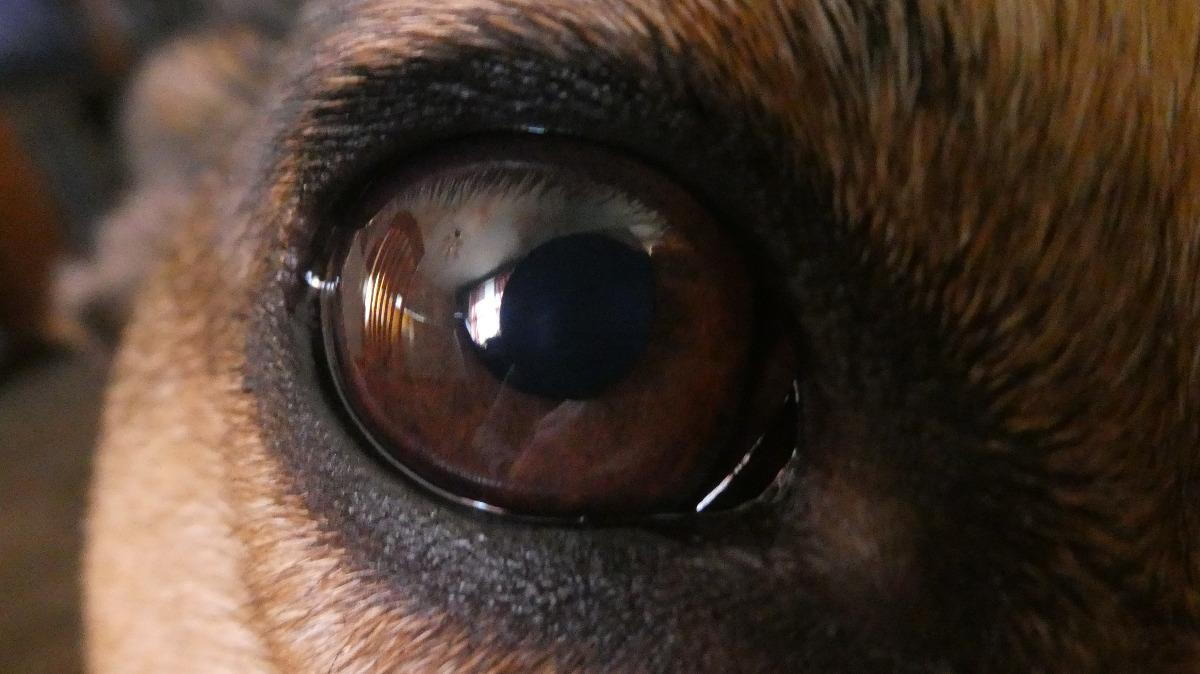Corneal Ulcers

- posted: Mar. 11, 2024
Corneal Ulcers
Damage to the clear covering of the eye known as the cornea can occur secondary to a scratch or other trauma to the eye, or to dirt, chemicals or a foreign object in the eye, eye infections, dry eye/lack of tear production, and defects of the eyelids (entropion) causing eyelashes to rub the cornea. A corneal ulcer can form after any of these injuries.
Corneal ulcers are painful. Affected dogs and cats will usually squint or keep their eye closed and may rub or paw at the affected eye. Drainage or discharge may also be present and the eye may look hazy or red.
Corneal ulcers may be visible on the surface of the eye, but a special fluorescent stain is often used to diagnose an ulcer. A drop of fluorescein stain is applied to the eye which is then viewed with the aid of a black light. The light causes the stain to glow green. Any defect in the cornea will take up stain and the size and depth of the ulcer will be more evident.
Superficial ulcers will often heal quickly once appropriate treatment is begun; however, some ulcers become very deep and can cause the eye to rupture without surgical repair while others can form a slow healing or indolent ulcer that may require removal of dead corneal tissue to promote healing.
Typically, a superficial corneal ulcer requires treatment for about 7-14 days with a topical antibiotic eye drop or eye ointment. Pain medication may also be dispensed and some pets may require an E-collar to prevent rubbing at the injured eye. Deep corneal ulcers, also known as descemetoceles may require a surgical repair such taking as a flap of tissue from the inner surface of the eyelid and suturing it to the cornea to create a “band-aid” on the defect.
Slow-healing or indolent ulcers occur most frequently in Boxers and Bulldogs and occur when a flap of dead tissue forms on the surface of the cornea. This usually requires a procedure to remove the dead corneal cells by either rubbing the surface of the eye with a cotton swab, or, for more stubborn ulcers, removing the cells with a diamond bur device (kind of like a small Dremel tool that removes cells from the surface of the eye) or other similar procedures.
Other medications like lubricating drops or serum may also be applied to the eye to aid healing. Blood contains an enzyme that promotes the healing of collagen in the cornea so the clear serum part of the blood is sometimes used to treat corneal ulcers. Temporary contact lenses may also be placed on the eye for a few weeks to protect the eye after diamond bur or other corneal surgeries.
In rare cases, very deep corneal ulcers may cause the eye to rupture and the entire eye may need to be removed.
The most common reason for a corneal ulcer is typically trauma, and, most superficial abrasions will heal with topical antibiotics. However, it is important to have your pet seen by his or her veterinarian right away as untreated ulcers may become more severe and slow healing ulcers may require additional treatments. If you suspect your pet has a corneal ulcer or other eye problem, do not delay—seek immediate treatment.
This blog brought to you by the Patton Veterinary Hospital serving Red Lion, York and the surrounding communities.
https://todaysveterinarypractice.com/pet-owner-resources/sentrx-corneal-ulcers-handout/
Location
Patton Veterinary Hospital
425 E Broadway
Red Lion, PA 17356
